May 23, 2025 | 10:36 GMT +7
May 23, 2025 | 10:36 GMT +7
Hotline: 0913.378.918
May 23, 2025 | 10:36 GMT +7
Hotline: 0913.378.918
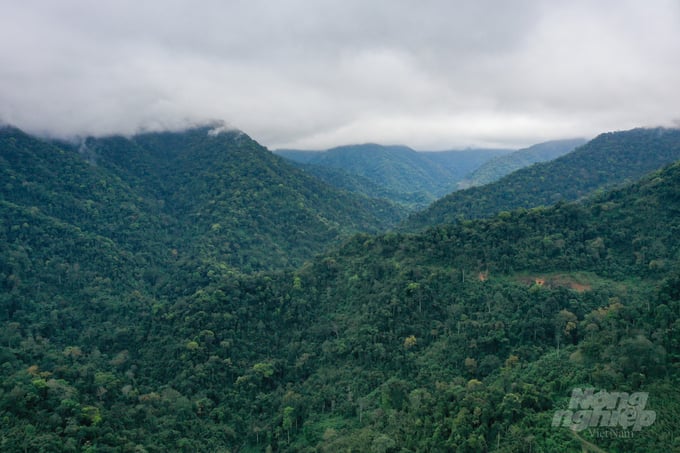
Pu Mat National Park is home to rich flora and fauna, blessed with majestic and impressive landscapes. Photo: Quoc Nhat.
In the language of Thai people, "Pu" means mountain peak. Pu Mat is the highest mountain peak in the area at 1,841 meters, so two words were then used to name the national park. Pu Mat National Park's core area spans over 94,000 hectares, which is almost the size of Hung Yen province. The Park's buffer zone measures up to at least 86,000 hectares. The more well-known Cuc Phuong National Park, is considerably smaller than Pu Mat National Park, with a surface area of only 22,000 hectares.
Covering a wide area that includes the districts of Con Cuong, Tuong Duong, and Anh Son, Pu Mat possesses an extremely diverse ecology in terms of both flora and fauna. Stepping through the gate of the administrative service center, tourists will find a row of Gurjan balsam trees that extends hundreds of meters, creating a green path that leads to the administrative service center of the park. The ten-meter-tall, straight-stemmed Gurjan balsam trees are considered a signature of the tropical forests in western Nghe An and several neighboring provinces.
Pu Mat's beauty lies in the grandeur of the green forest, in the pristine purity untouched by human hands. Tourists may also witness the wild features of the primeval forest with the highest biodiversity in Vietnam in addition to many outstanding landscapes.
Khe Kem waterfall is located 20 kilometers southwest of 7A National Highway that runs through Con Cuong Town. Khe Kem is the official name of this magnificent waterfall, and the local Thai people call it "Bo Bo", which means silk. The 150-meter tall, multi-layered waterfall is a gift for those who are prepared to spend an hour navigating the twisting and uneven route to get there.
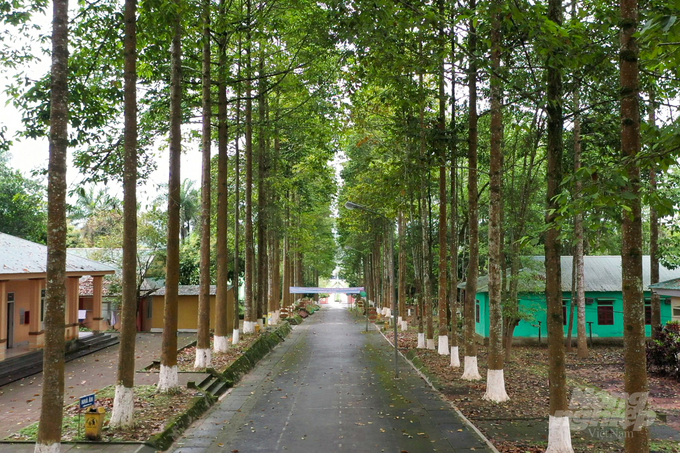
Rows of straight, towering Gurjan balsam trees creating a path that leads to the Management Board Building of Pu Mat National Park. Photo: Quoc Nhat.
A wonderful scenery awaits at the top of the waterfall: an endless stream of white water gushing out from the mountain bed, falling through many layers, throwing up foam strips, like a silk ribbon flowing endlessly. A clear, cool stream lies at the foot of the waterfall, surrounded by the sound of birds singing in green forests. Many scientists have confirmed that Khe Kem waterfall is one of the most primitive waterfall in Vietnam.
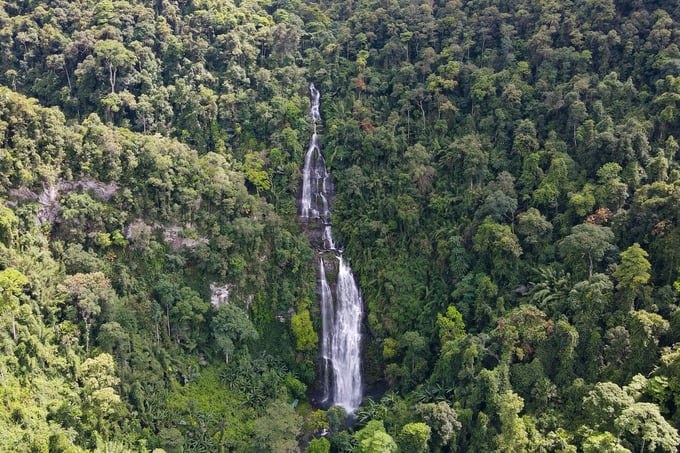
Khe Kem Waterfall seen from above. Photo: Quoc Nhat.
To the East, the Giang River flowing through the forest core of Pu Mat is also an amazing destination for those looking to explore and immerse themselves in nature.
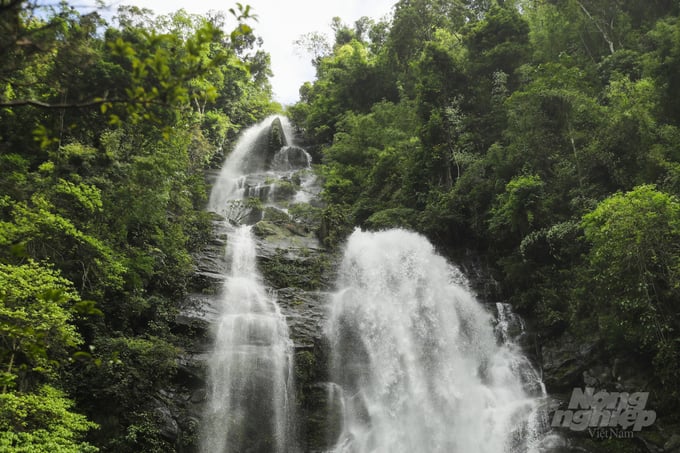
The 150-meter tall, multi-layered Khe Kem waterfall is called "Bo Bo" in the Thai language, which means silk ribbon. Photo: Quoc Nhat.
The riverbanks are decorated with rows of red sang le (Lagerstroemia tomentosa) changing leaves as it is that time of the season. The river becomes seemingly quiet with the addition of the Pha Lai dam, which means "flowers of heaven" in Thai. Tourists traveling by boat on the river can feel the wild beauty of Pu Mat through the thick forests, dotted with high white limestone cliffs.
As part of the North Truong Son ecological area, Pu Mat National Park can be considered a biodiversity conservation area representing the largest tropical and subtropical forest ecosystem in North Truong Son. Additionally, the park is home to numerous rare animals and plants, including novel species found by researchers in the 90s. One of the earliest sightings of the rare Sao la mammal species in Vietnam came from this area.
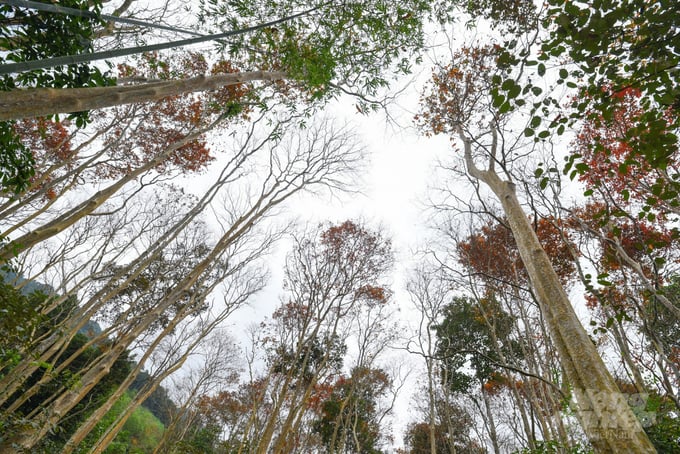
The sang le trees during the changing season on the Khe Choang road. Photo: Quoc Nhat.
Despite immense potential, utilizing Pu Mat National Park's natural advantages by balancing ecological preservation with resource exploitation is a story for further discussion.
Amidst the rustling of leaves on the early summer days and the sound of birds chirping around the administrative service center, Director Tran Xuan Cuong told us about the obstacles in fully utilizing the strengths of Pu Mat National Park.
Mr. Cuong has discussed the possibility of entrance fees with the provincial People's Council. The current challenge is that fee collection lacks a suitable framework. As per recommendations by the Ministry of Agriculture and Rural Development, the entrance fee should be between VND 60,000 and 80,000 per person. According to Mr. Cuong, this price range is too high for a mountainous area like Pu Mat, so he suggested reducing it to VND 30,000 per person.
"But with such a low revenue means that the park is not generating enough profits to cover expenses. We still have our duty to maintain the park's workforce in attraction sites", he said. Director Cuong suggested the Ministry of Agriculture and Rural Development issue a guideline so that national parks and nature reserves can establish a minimum fee level to meet maintenance demands.
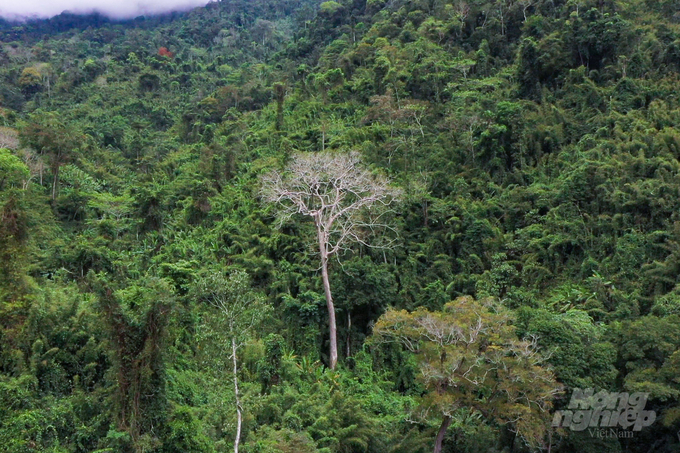
Old trees with bare branches before the new leaf season can be spotted on the way to the core area of Pu Mat forest. Photo: Quoc Nhat.
According to the Park Director, the Ministry of Agriculture and Rural Development should publish instructions on this matter because it takes a lot of time for Provincial People's Councils to formulate resolutions.
Mr. Tran Xuan Cuong also stated that Phong Nha - Ke Bang National Park is the only park in Vietnam that can generate enough profits to cover its expenses. The state budget must therefore be maintained to ensure the operation of national parks and nature reserves. Policies and regulations come after to draw investment into the forest, boost tourism, and expand services, which entails the participation of businesses. But one fact remains as policies on land or cooperation between businesses and forest owners are limited, making it impossible for units to coordinate their efforts.
A model of cooperation between forest owners and businesses to carry out tourism and service exploration activities in Phong Nha - Ke Bang National Park is currently being implemented effectively. Accordingly, activities are organized by site, route and both forest owners and businesses have been involved since the development of an exploitation project. As a result, forest owners are the central players in the management process. On the other hand, the organization of exploitation and operation will be undertaken by businesses.
"Pu Mat is in the process of developing a scheme so that several tourist routes can follow this model," said Mr. Cuong. From his point of view, without the participation of businesses, the park would not be sufficiently funded and lack the ability to do marketing.
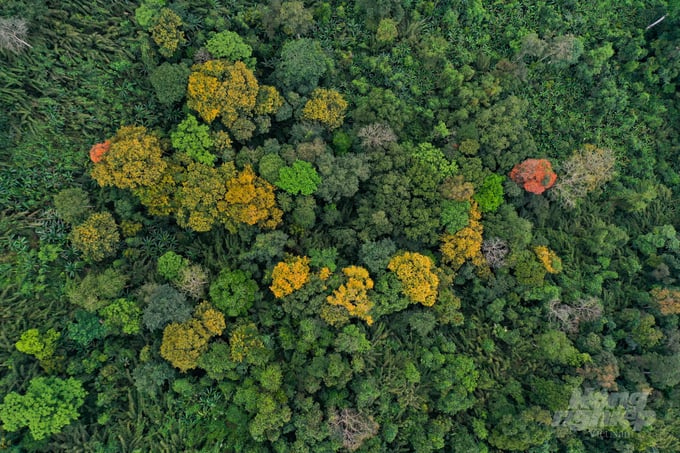
A corner of Pu Mat forest in late spring - early summer. Photo: Quoc Nhat.
Pu Mat is located in the border area so the development of tourism with foreigners is limited. Namely, only visitors with a work visa will be considered for access by the provincial immigration authorities. This means a large number of international tourists will not have the opportunity to experience the diverse ecosystem of Pu Mat.
“I think that with border areas that are not prioritized in terms of security and defense, we can pilot expanding the permits of licensed subjects, allowing visitors with tourist visas to access those areas. The procedure can be localized to the district level to reduce the processing time for foreigners," Mr. Cuong said.
Pu Mat National Park has the potential to develop herb cultivation under the forest canopy. Although this is a topic of interest for many units and organizations, it is subject to many constraints related to forest management regulations.
Pu Mat is receiving the attention of a major businesses thanks to its ability to develop Thach Hoc orchid, a valuable medicinal herbs, which grows well under the forest canopy and does not affect the ecology of the forest.
However, Thach Hoc is not a plant endemic to Pu Mat, so it would be illegal to include it in the area. Consequently, the national park is developing a plan to expand several areas in the near future for economic development under the forest canopy without affecting the ecosystem.
Translated by Nguyen Hai Long

(VAN) The People's Committee of Tra Vinh province has approved an adjustment to the investment policy for the Green Hydrogen Plant project, increasing its area to approximately 52.76 hectares.
![Reducing emissions from rice fields: [2] Farmers’ commitment to the soil](https://t.ex-cdn.com/nongnghiepmoitruong.vn/608w/files/news/2025/05/05/dsc08881jpg-nongnghiep-140632.jpg)
(VAN) Clean rice cultivation model in Thuong Tan commune, Bac Tan Uyen district, is assisting local residents in achieving sustainable agriculture by substantially reducing costs, increasing productivity, and protecting the environment.

(VAN) At the conference to disseminate Resolution No. 68, AgriS introduced its digital agricultural ecosystem and reaffirmed its commitment to accompanying the Government in promoting private sector development and sustainable agriculture.

(VAN) 'Blue Ocean - Blue Foods' initiative is designed to restore marine ecosystems and establish sustainable livelihoods for local communities by cultivating a minimum of 1,000 hectares of cottonii seaweed in the first three years.
/2025/05/21/4642-3-112707_603.jpg)
(VAN) The V-SCOPE project has made direct contributions to three out of six pillars of the Comprehensive Strategic Partnership between Vietnam and Australia.

(VAN) Facing the threat of rabies spreading to the community, Gia Lai province urgently carries out measures to vaccinate dogs and cats on a large scale.

(VAN) Disease-free livestock farming not only protects livestock herds but also stabilizes production and livelihoods for many farmers in Tuyen Quang.